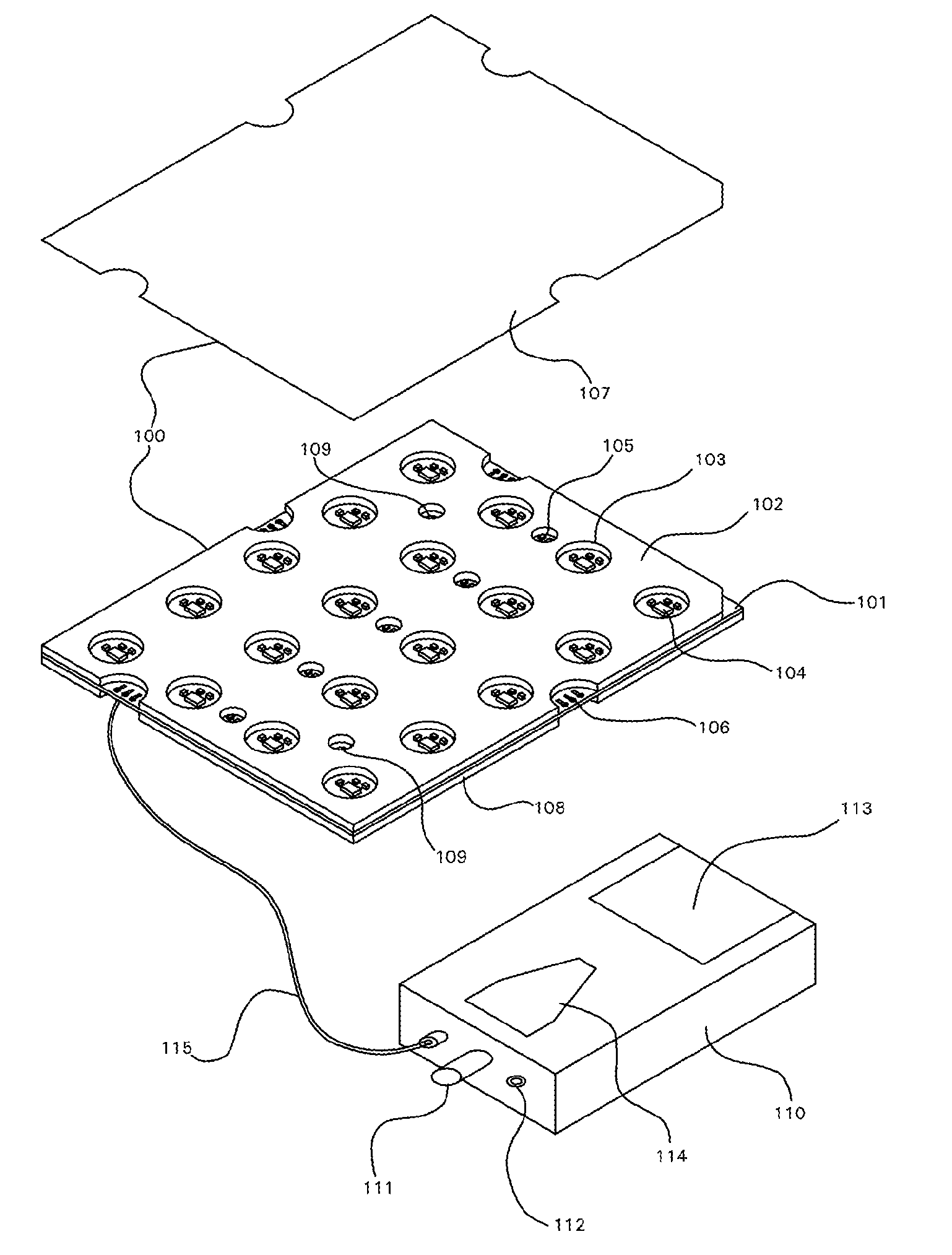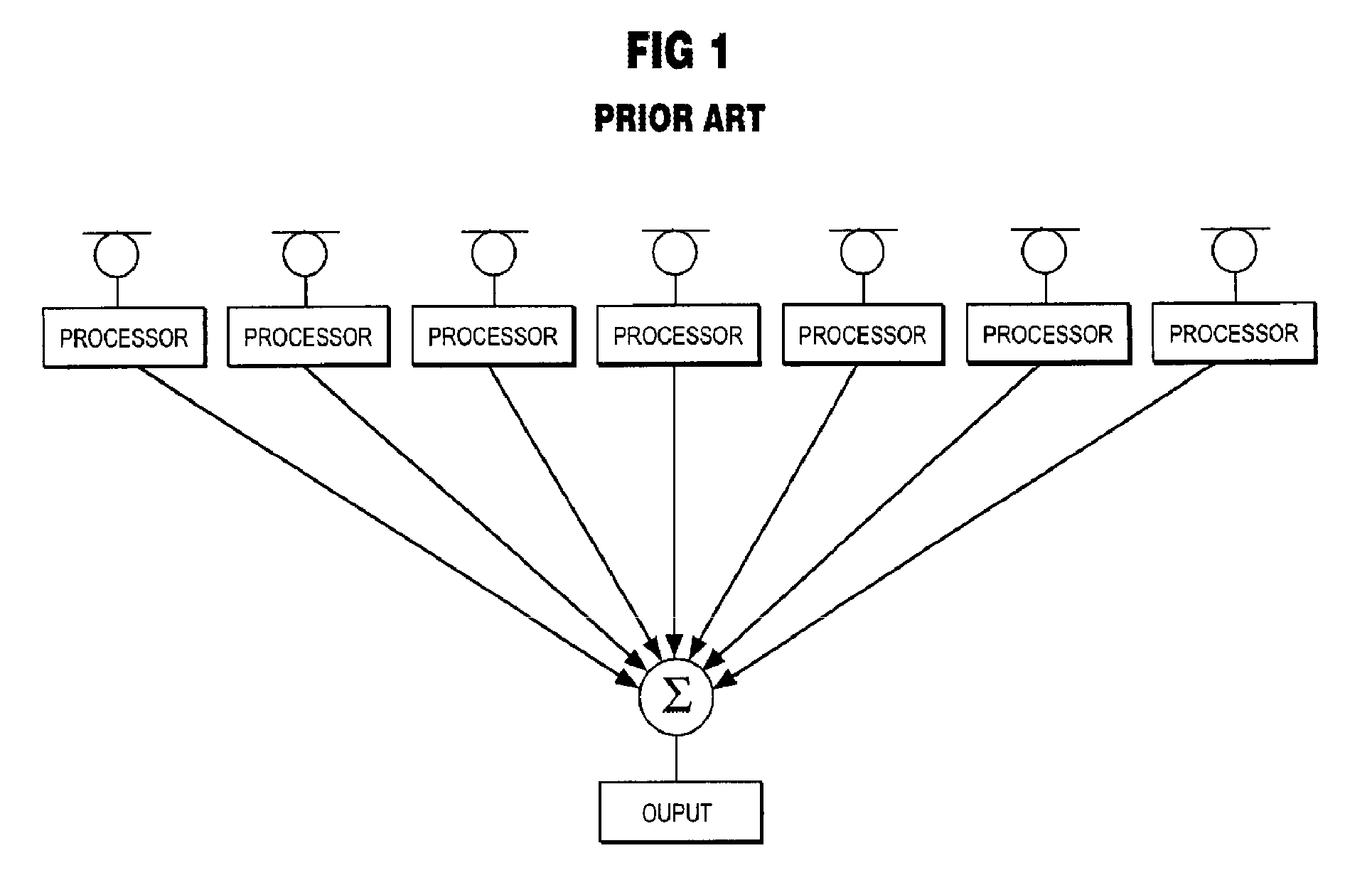Modular and scalable directional audio array with novel filtering
a directional microphone array, modular technology, applied in the direction of magnetic restriction transducers, transducer details, electrical transducers, etc., can solve the problems of inability to easily scale between small and large configurations for greater effectiveness, significant impact on complexity, noise performance, power consumption, etc., to achieve robust, modular and highly scalable directional microphone arrays, inherently scalable, and sufficient power
- Summary
- Abstract
- Description
- Claims
- Application Information
AI Technical Summary
Benefits of technology
Problems solved by technology
Method used
Image
Examples
embodiment
Preferred Embodiment
[0082]The manner of using the directional microphone system to listen to remote sound sources is identical to that for parabolic dishes in present use once the system is assembled. The user (listener) simply steers the panel(s) so that the spatial axis that is perpendicular to the plane of the tile(s) is pointed at the targetted sound source. The user then listens through the headphones which are connected to the base unit and makes necessary adjustments to the steering azimuth and elevation so that the desired sound source has the peak response, as determined by listening through the headphones.
[0083]Assembly of the system consists first of connecting the tiles together if there are more than one to be included in the array. Each twenty-element tile in the preferred embodiment has a grid of five microphone elements in one direction and four in the other (of course, this might vary in other embodiments). The user decides upon the arrangement of the tiles in the a...
PUM
 Login to View More
Login to View More Abstract
Description
Claims
Application Information
 Login to View More
Login to View More - R&D
- Intellectual Property
- Life Sciences
- Materials
- Tech Scout
- Unparalleled Data Quality
- Higher Quality Content
- 60% Fewer Hallucinations
Browse by: Latest US Patents, China's latest patents, Technical Efficacy Thesaurus, Application Domain, Technology Topic, Popular Technical Reports.
© 2025 PatSnap. All rights reserved.Legal|Privacy policy|Modern Slavery Act Transparency Statement|Sitemap|About US| Contact US: help@patsnap.com



